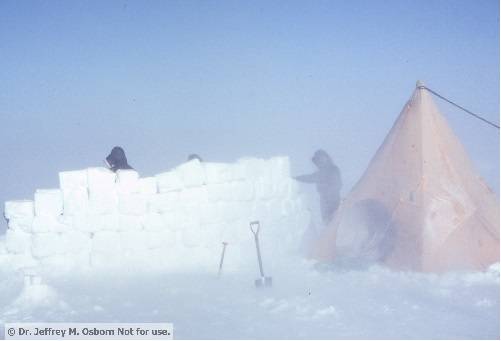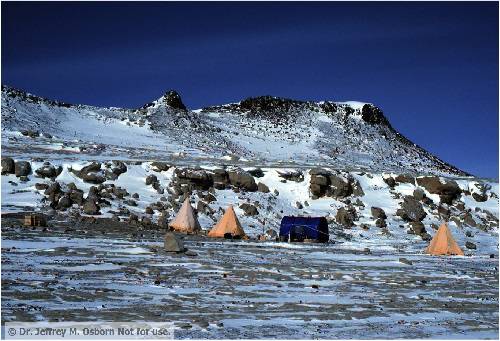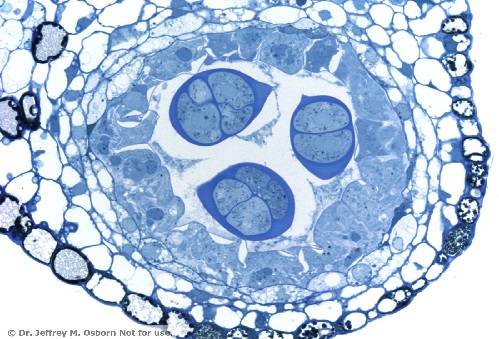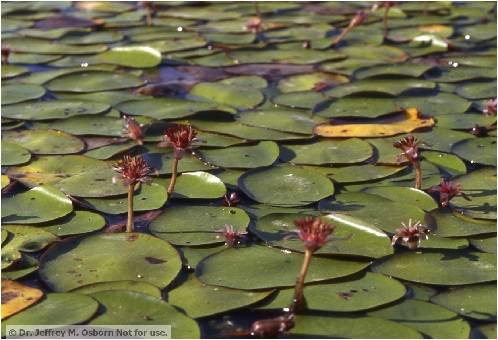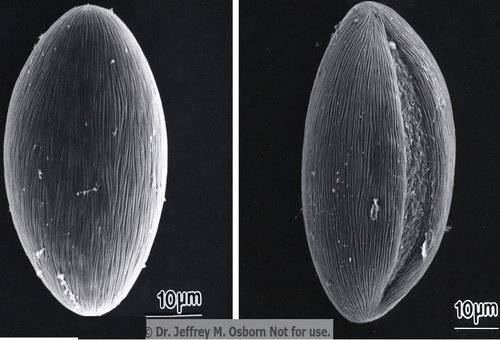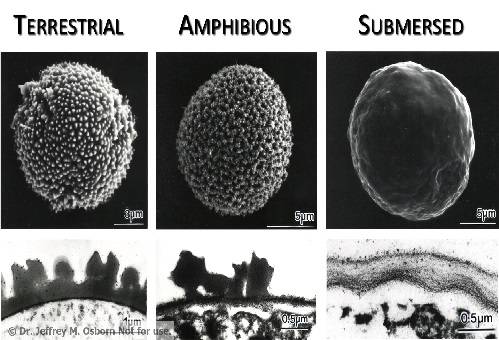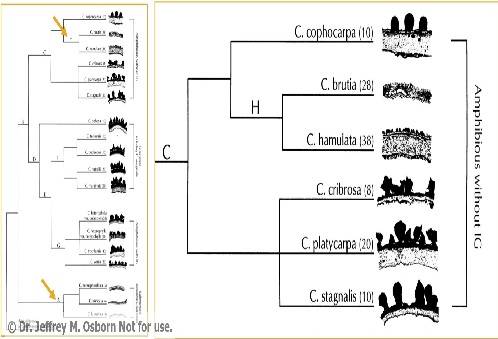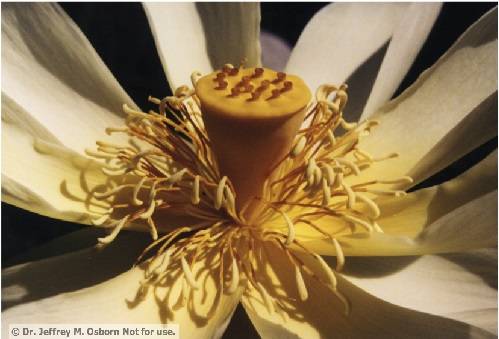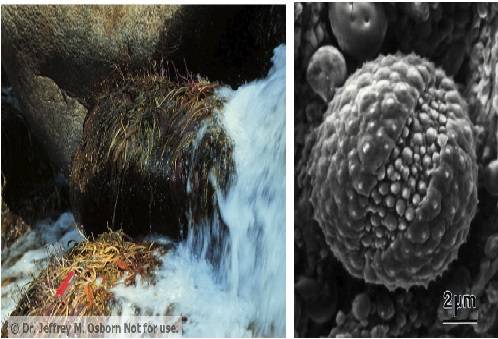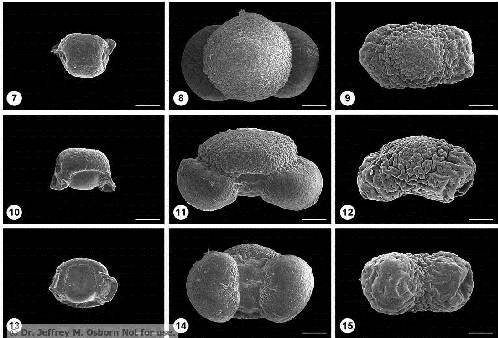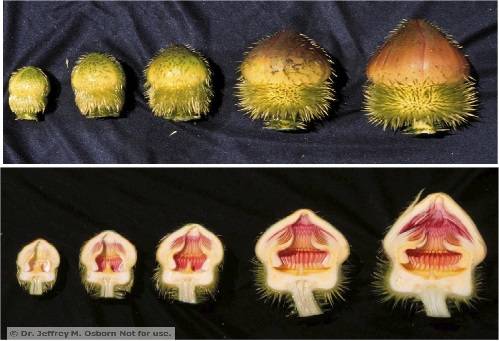Project Topic / Abstract:
“Pollen Development in Ephedra americana (Gnetales)”
Ephedra, or Mormon’s Tea, has been widely utilized in weight-loss and energy-boosting supplements, although the US Food and Drug Administration has recently banned its usage. Ephedra, along with Welwitschia and Gnetum, comprise the gymnospermous order Gnetales. Despite marked dissimilarity in habitat and habit among these genera, most phylogenetic analyses indicate that the Gnetales is monophyletic. Ephedra segregates independently, whereas Welwitschia and Gnetum are more closely related. The phylogenetic position of the Gnetales among seed plants has received much attention in recent years. Although the order has been regarded as the sister group to angiosperms, recent molecular studies have nested the Gnetales within conifers. Several investigations have focused on mature pollen of Ephedra; however, little is known about pollen development in the genus. The objective of this project was to comparatively study pollen ontogeny in Ephedra americana. Light, scanning electron, and transmission electron microscopy were used, and all major developmental stages have been documented, including the microspore mother cell, tetrad, free microspore, and mature stages. Developmental events including the deposition of a callose ‘special’ wall, primexine, and the sporoderm layers will be discussed. Significant exine deposition, including formation of the tectum, infratectum, footlayer, and endexine, occurs during the tetrad stage. At the end of the tetrad stage, the infratectal layer is composed of small granules, the foot layer is relatively thin, and the endexine is composed of robust lamellae. The intine forms during the late free microspore stage. Free microspores and mature grains are elliptic in shape and characterized by a series of longitudinal ribs, or plicae, that have a psilate ornamentation. Although mature pollen grains are inaperturate, the exine is considerably thinner between the plicae, or within the furrows, which have a straight morphology. These developmental characters will be discussed regarding systematic and phylogenetic interpretations of Ephedra and Gnetales.
Publications:
- Doores, A. S., G. El-Ghazaly, and J. M. Osborn. 2007. Pollen ontogeny in Ephedra americana (Gnetales) International Journal of Plant Sciences 168: 985-997. Article (PDF)
Presentations:
2004
- Truman Student Research Conference (Kirksville, MO) View Abstract
- Botany 2004 (Snowbird, UT) View Abstract
2005
- Truman Student Research Conference (Kirksville, MO) View Abstract
2006
- Turman Student Research Conference (Kirksville, MO) View Abstract

